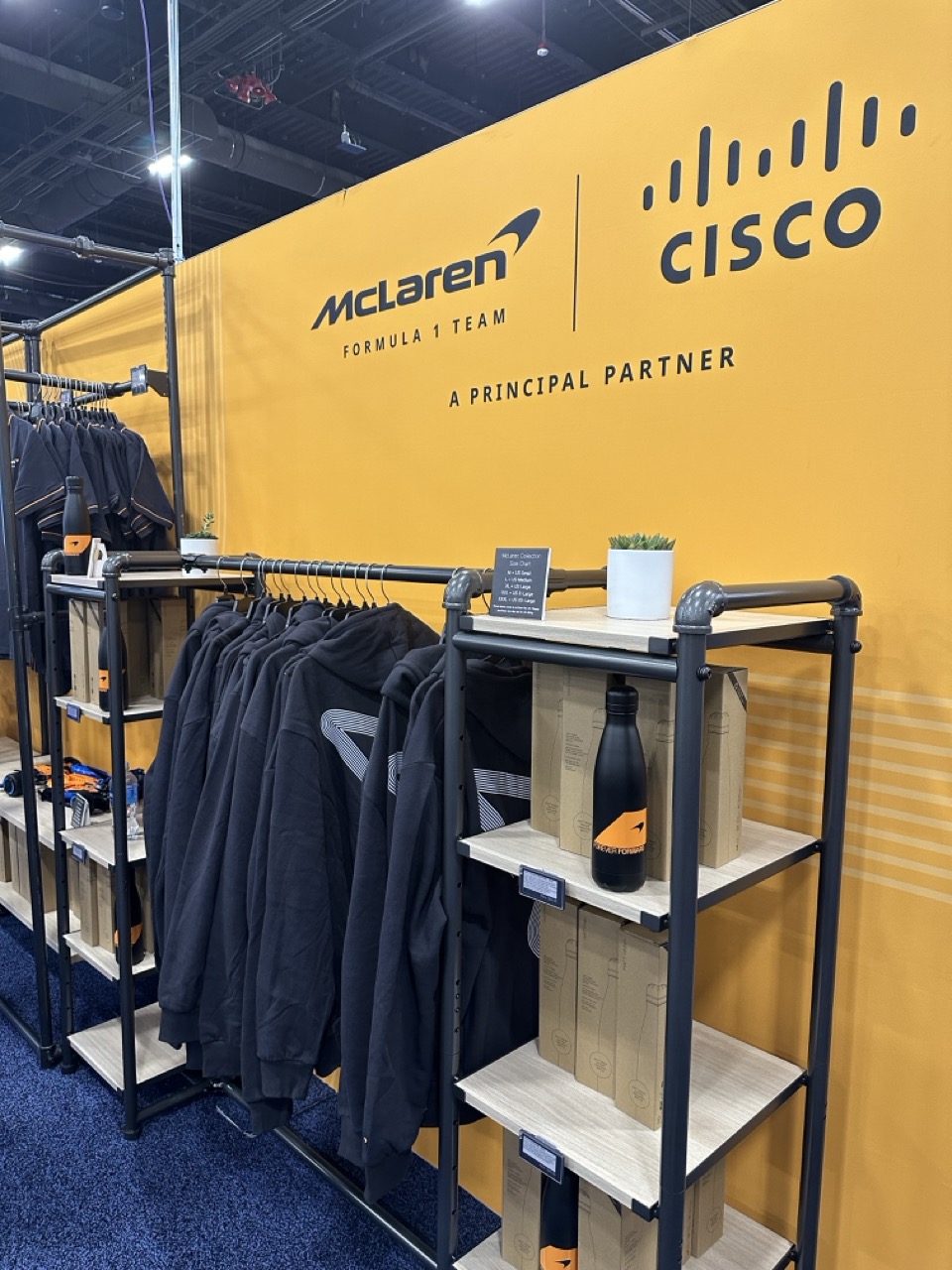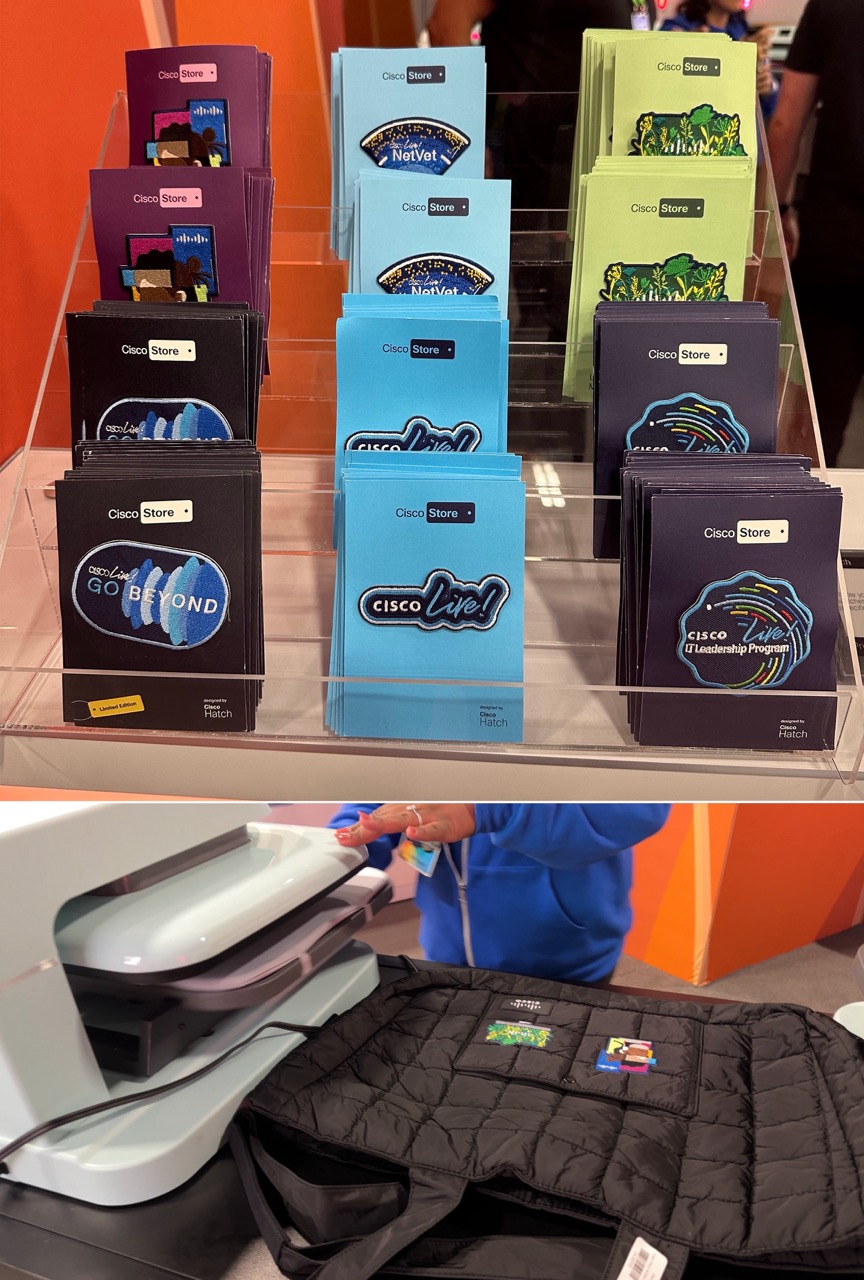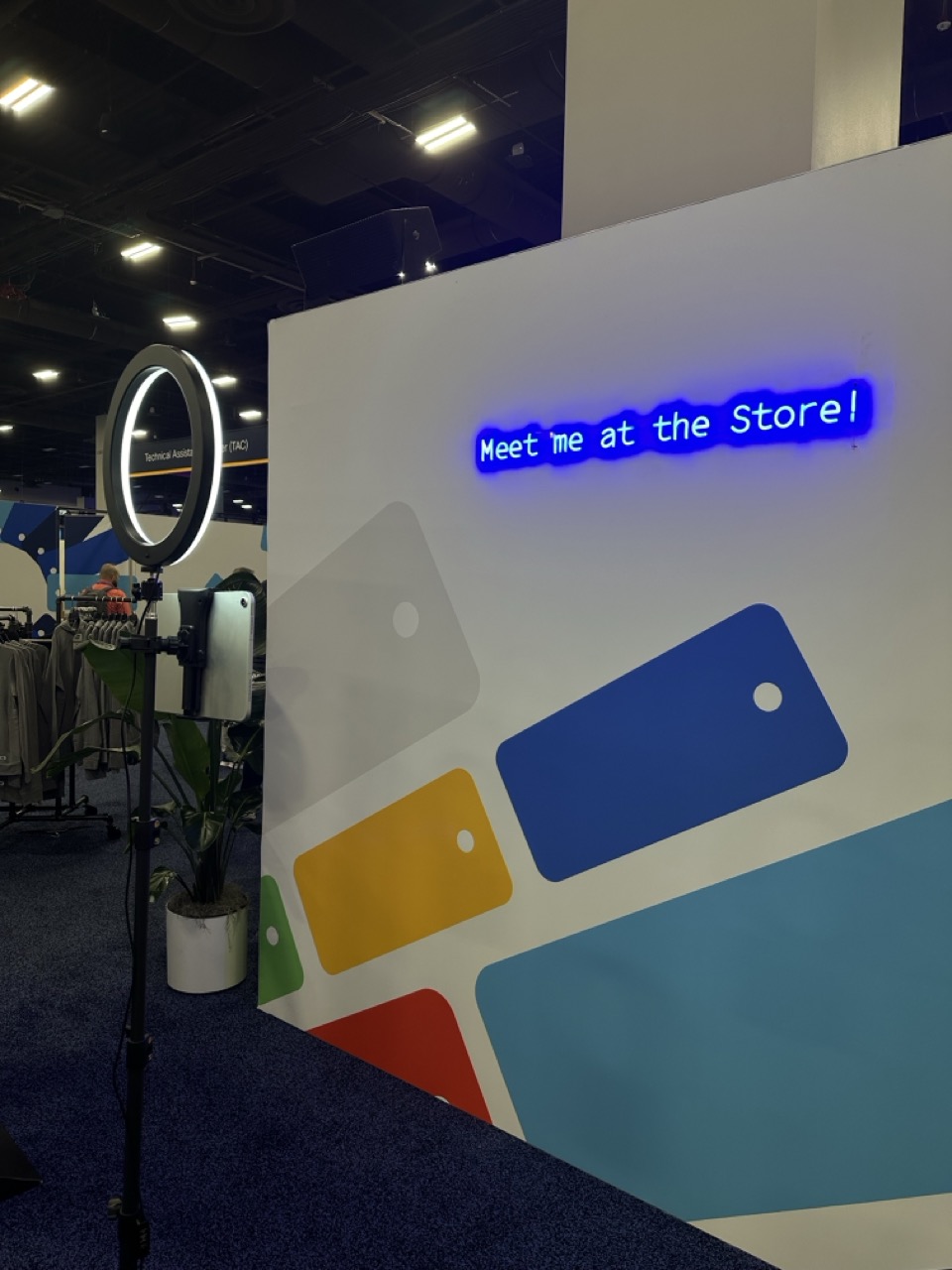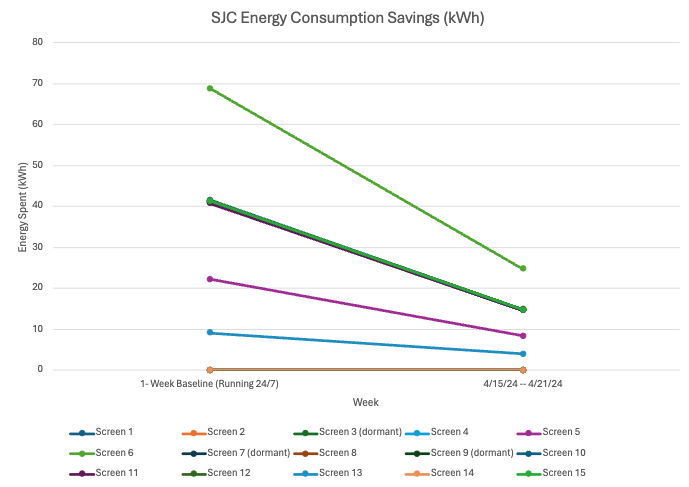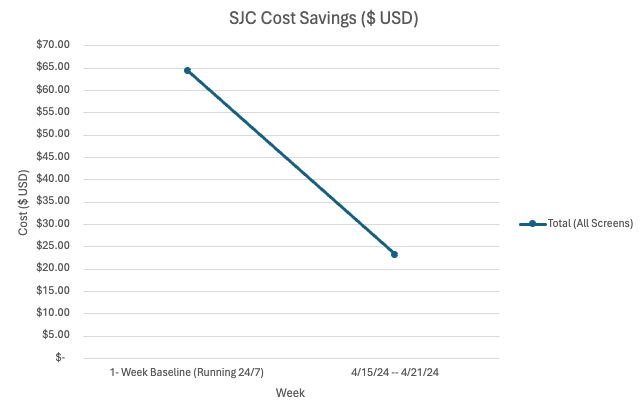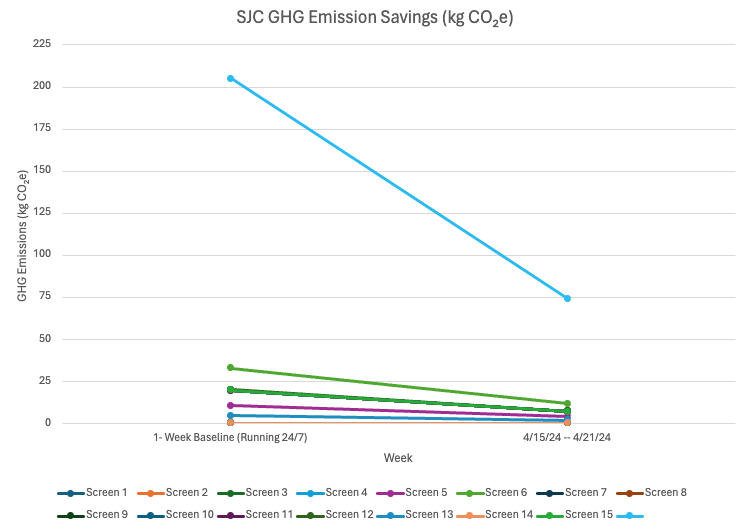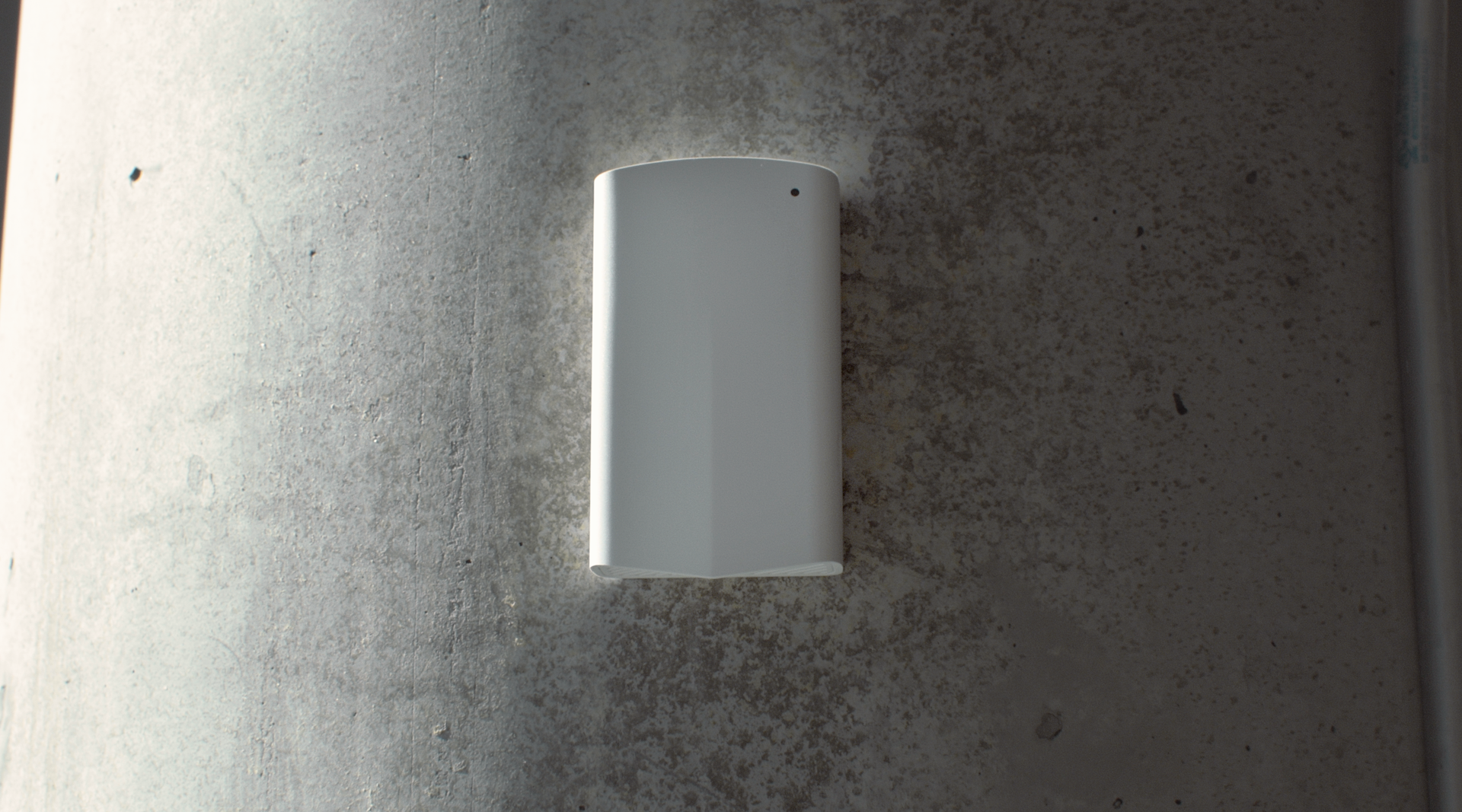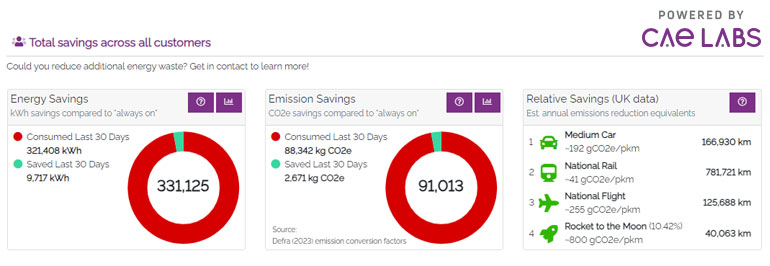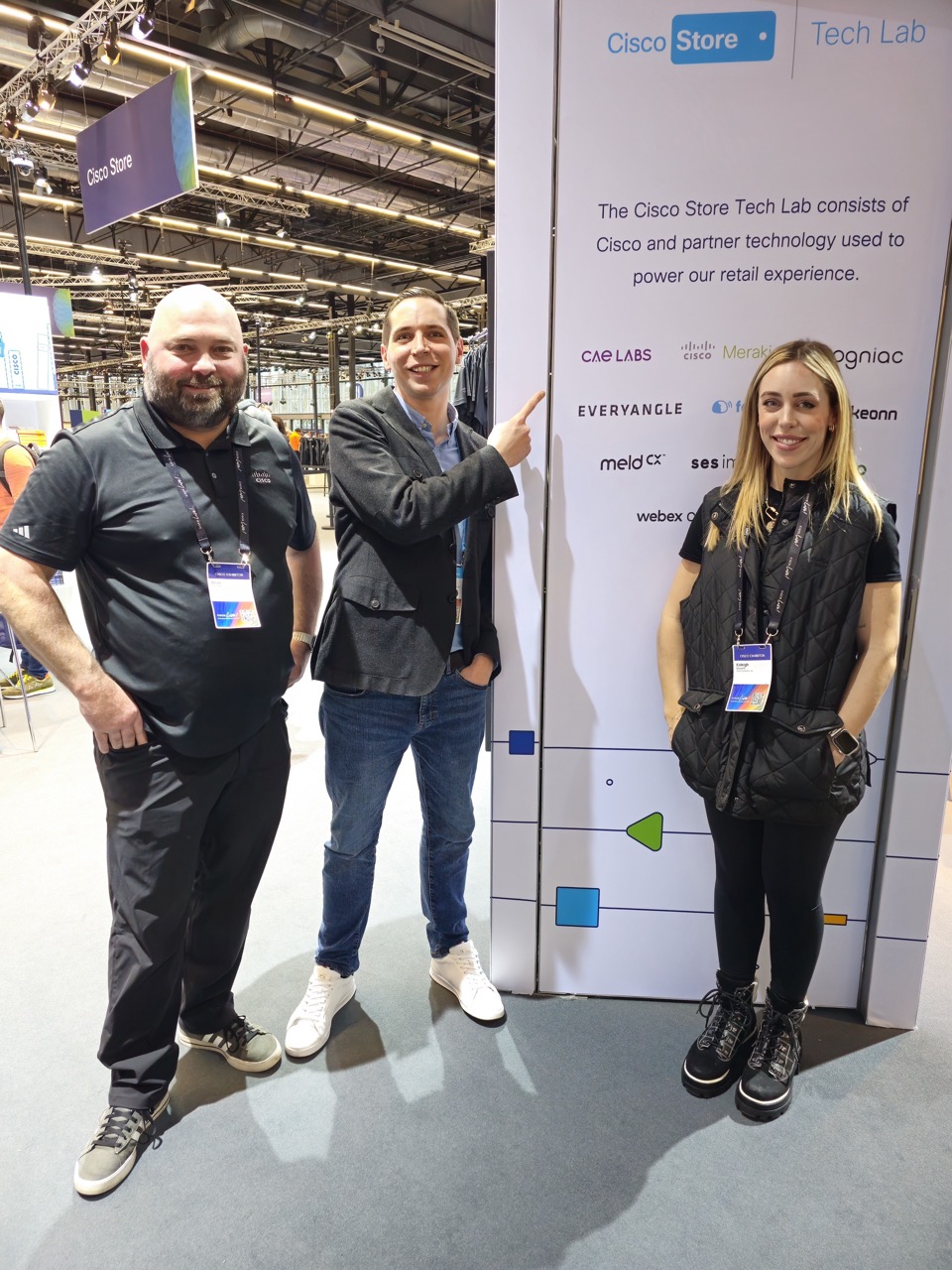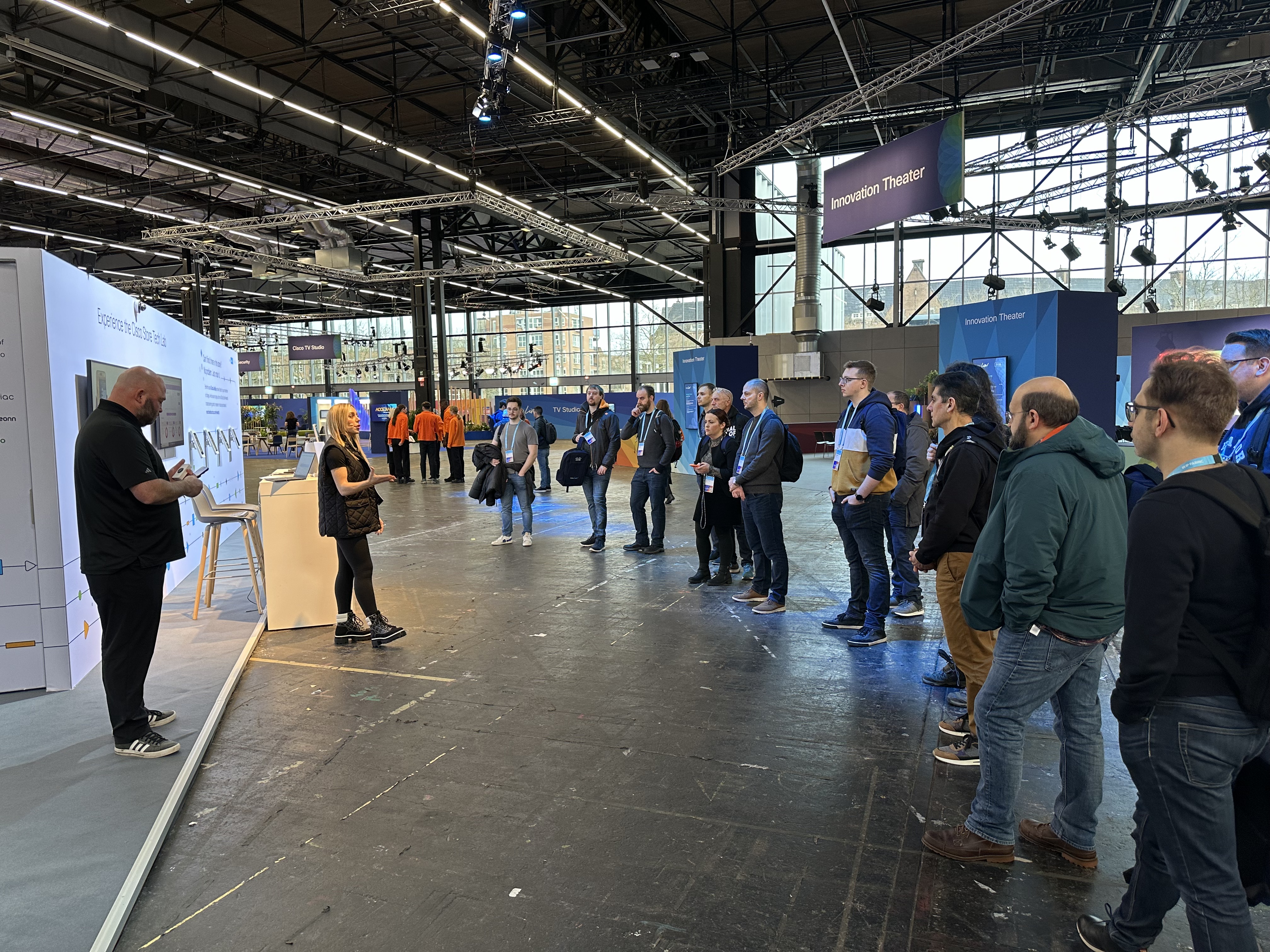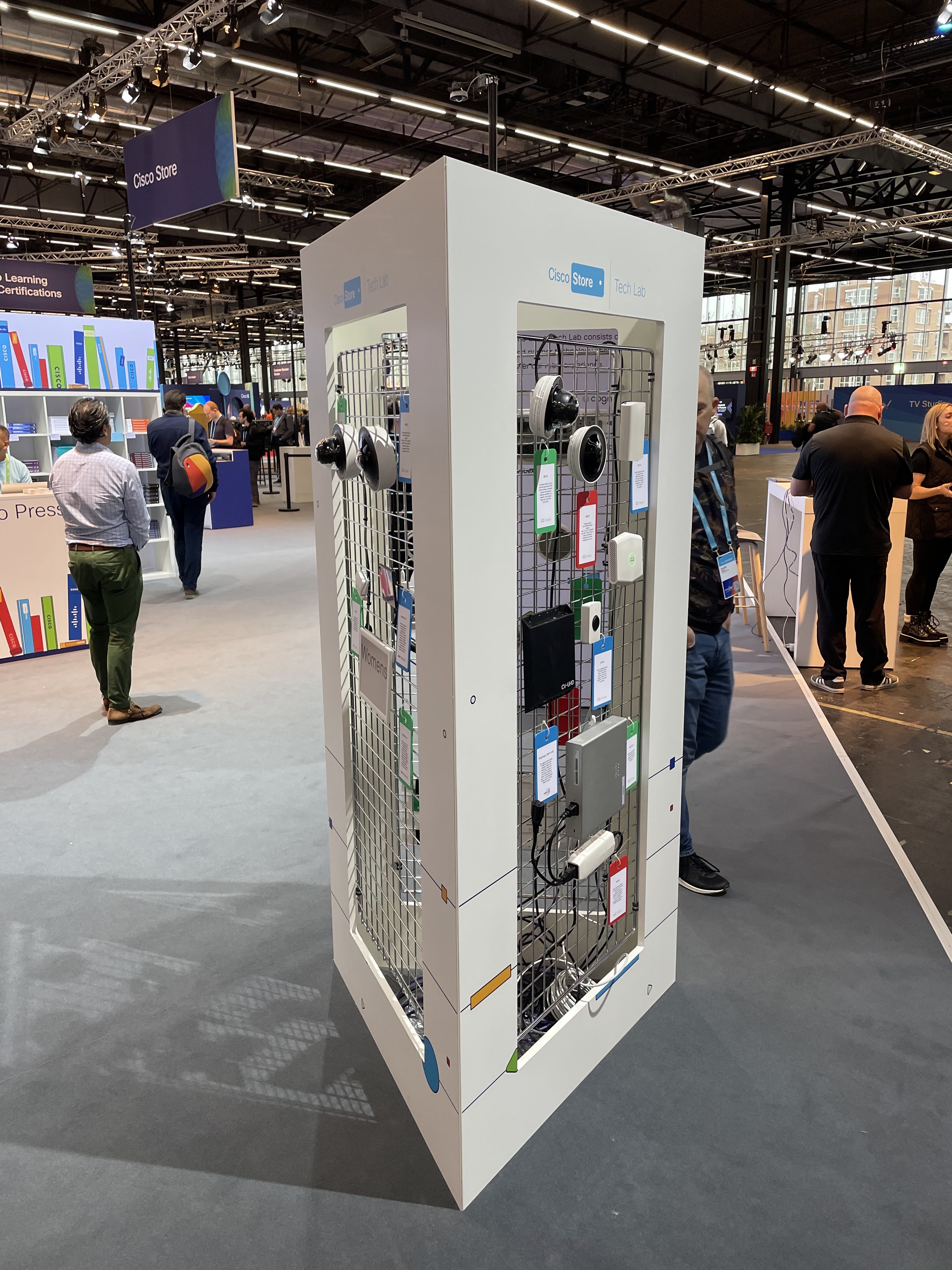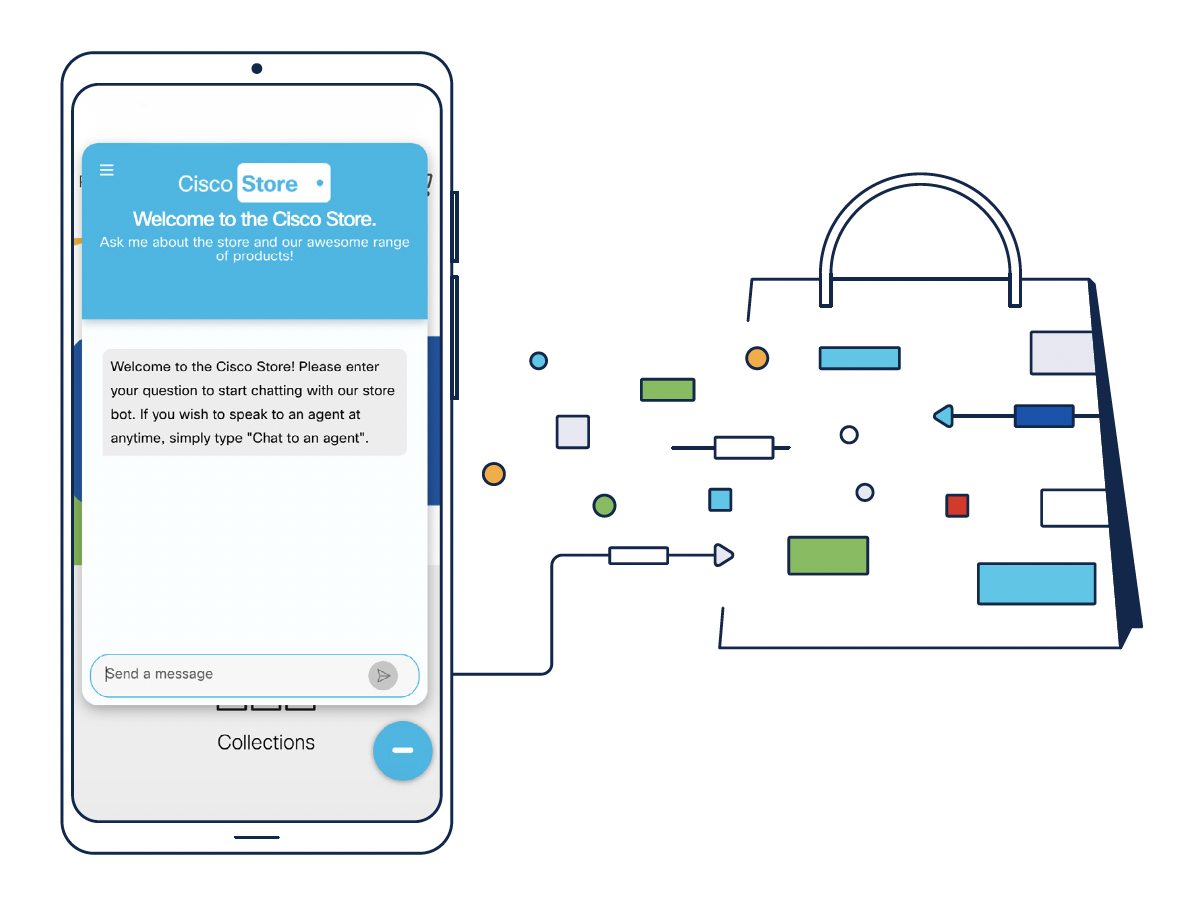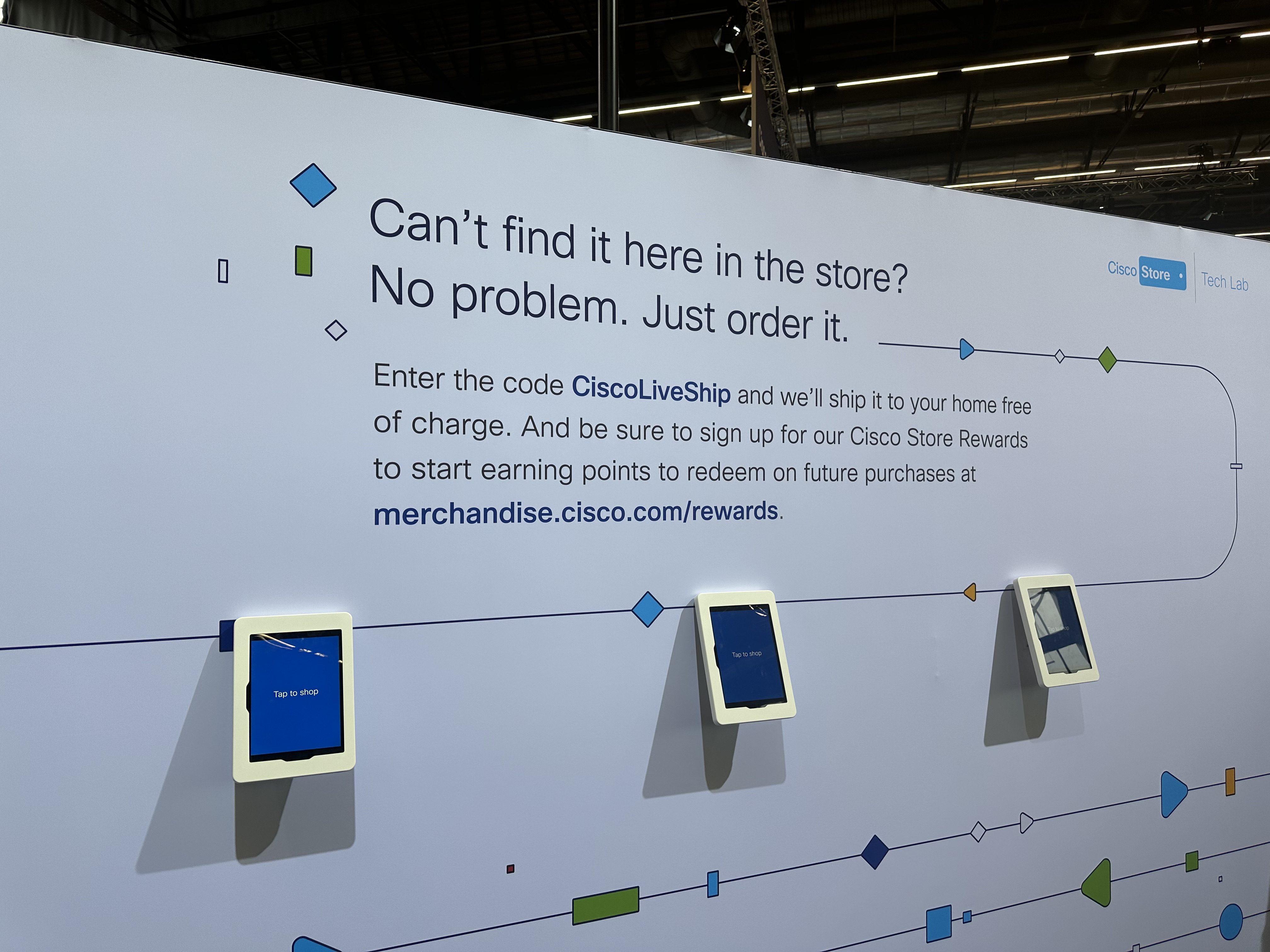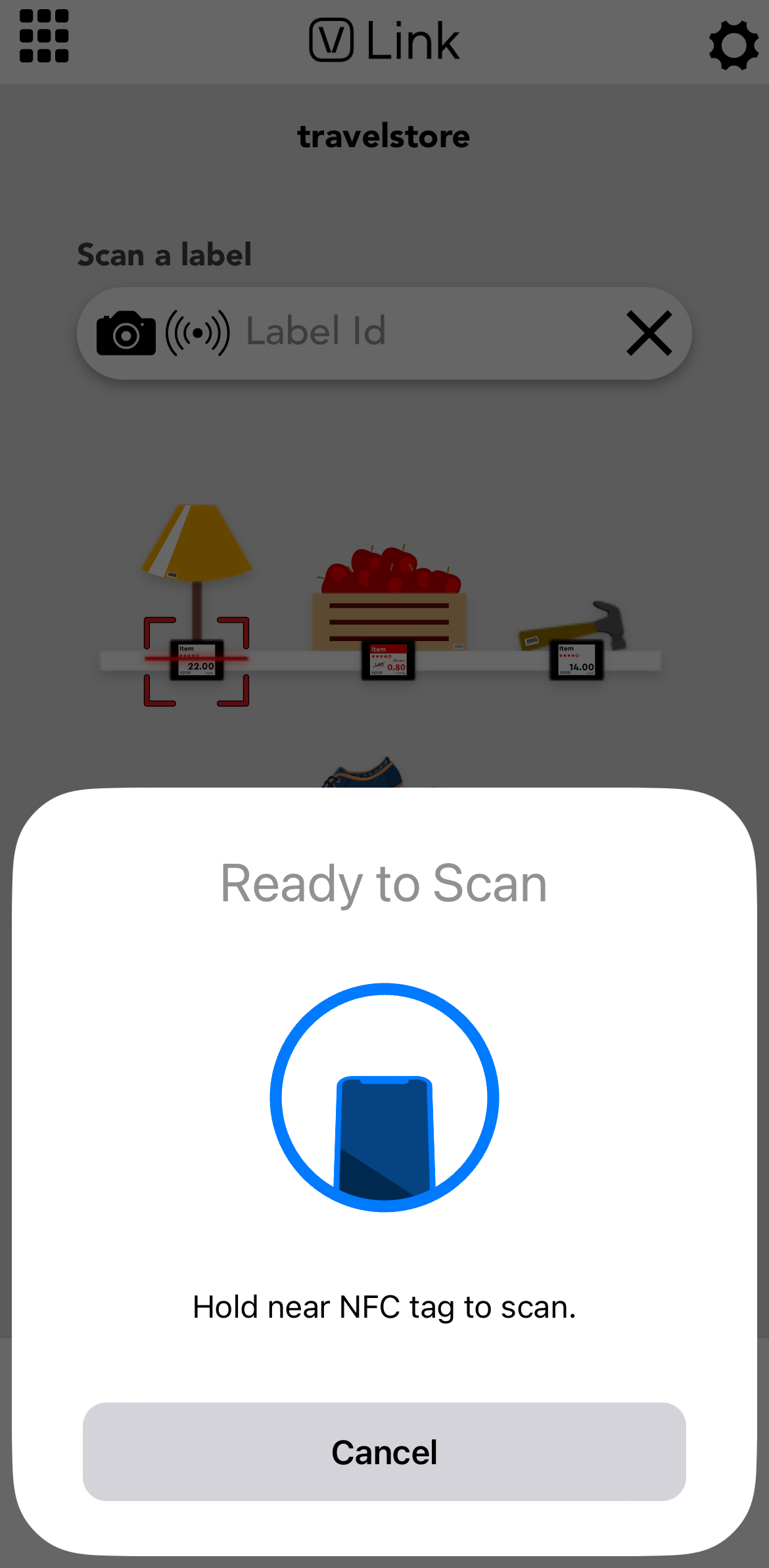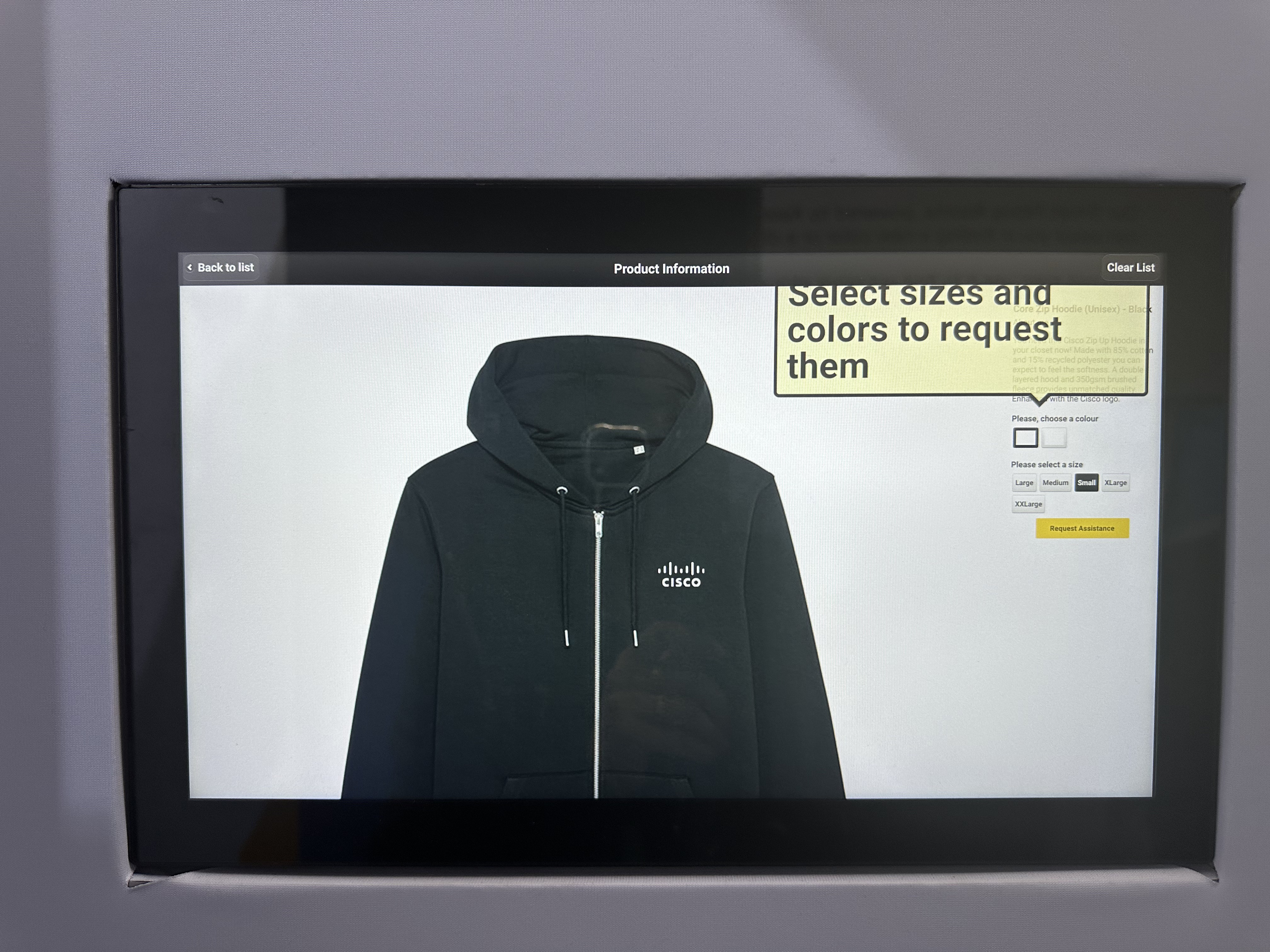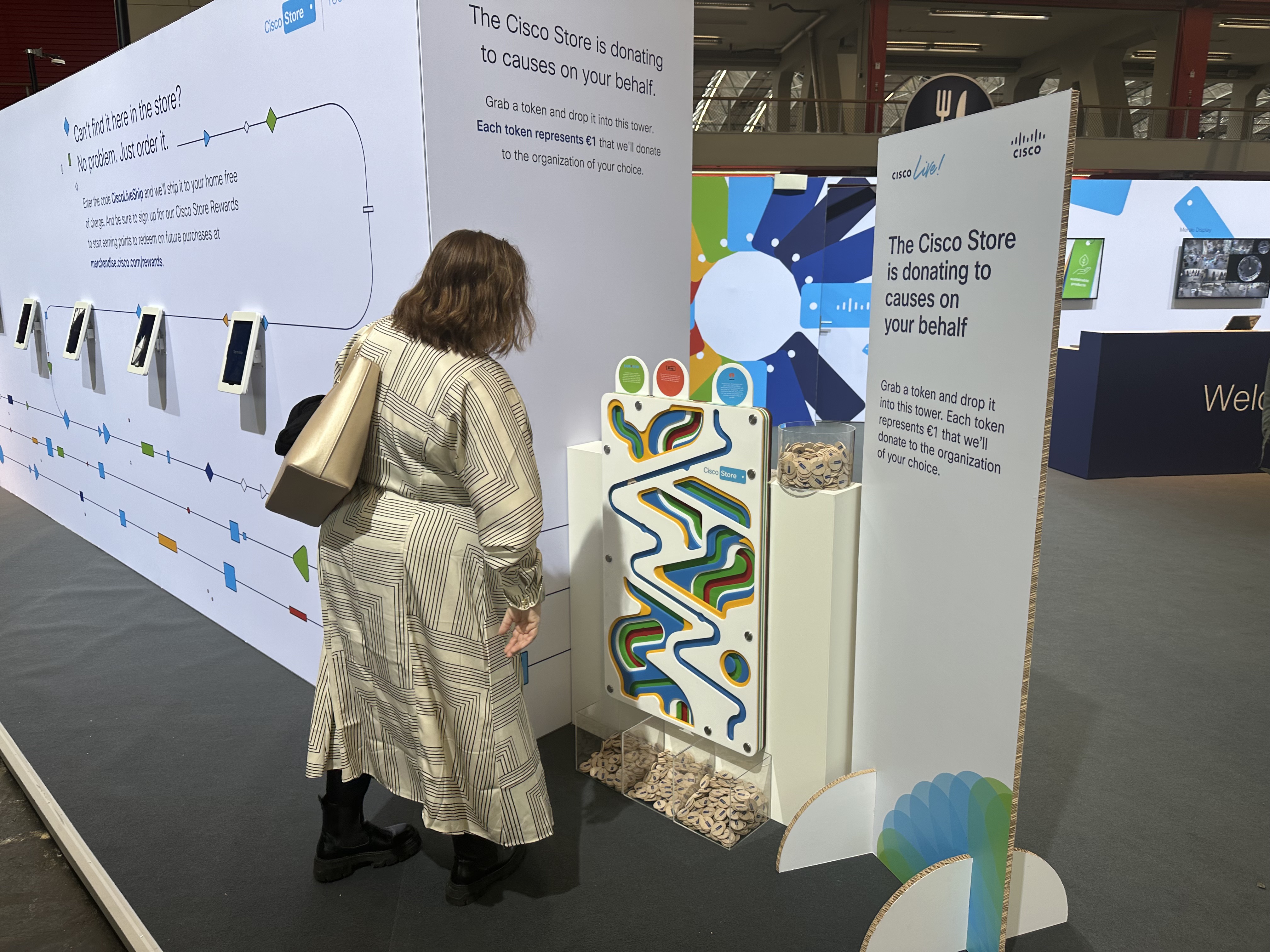The Cisco Store at Cisco Live was grander than ever this year – we're talking a giant leap to 7,500 square feet of eye-catching technology and merchandise. A real crowd magnet, the store hosted over half of the 23,000 attendees at the whole show. 519 lucky people snagged a spot on one of our 26 Cisco Store Tech Lab tours to learn how we power a real retail environment with Cisco and partner technology. Plus, retail proved to be very much alive and well: merchandise sales were up 34% from last year, showing that the love for the Cisco brand is stronger than ever.
The technology stack behind our Cisco Live Amsterdam store went on a global adventure, landing in Las Vegas to energize the Cisco Store there. We ran the whole show on a full Meraki stack, featuring the latest gear like the MS130 switches, access points, nifty sensors, handy buttons, and even power monitoring sensors. Plus, we teamed up again with some stellar partners like EVERYANGLE, VusionGroup, CAE Labs, Wipro VisionEDGE, Webex Connect, and more to amp up the experience.
Visitors were especially wowed by VusionGroup’s Captana, which alerts staff when items are out of stock as well as checks for merchandise planogram compliance.
EVERYANGLE also turned heads with its in-store conversion rate generation for our brick-and-mortar spaces. Attendees got the inside scoop by touring with the pros who run the Cisco Store, getting a firsthand look at how we make retail magic happen.
Like Amsterdam, we also deployed 15 Meraki MT40 smart power controllers throughout the store to baseline our power consumption during the show with the help of CAE Labs’ WiserWatts platform. We plan to schedule our power at both of next year’s shows to compare our energy and cost savings: after baselining and scheduling power at our San Jose store, we have reduced our energy consumption by 66%, helping us fulfill our core principle of sustainability.
Can’t wait to see it for yourself? Check out our Cisco Store Tech Lab Tour video to dive into the action from wherever you are!
Along the way, tour attendees could experience how the Cisco Store powers an inclusive future for all: our donation tower was once again set up at the entrance of the store. Every token dropped into the tower represented a $1 donation to organizations such as Green Our Planet, Wine to Water, and Replate, totaling up to $1,207 by the end of the show.
The Cisco Store unveiled an array of new merchandise, thoughtfully crafted by Cisco’s internal creative agency, The Hatch, presenting the brand in an innovative and sophisticated manner. In light of the robust partnership between Cisco and McLaren, and with the notable presence of McLaren CEO Zak Brown and racing driver Oscar Piastri participating in the keynote Q&A, the store introduced a new line of Cisco | McLaren products. These items, aligning with the partnership’s prominence in the Cisco Showcase, were met with overwhelming demand (nearly selling out), underscoring the partnership’s resonance with not only Cisco but also with our customers and partners.




